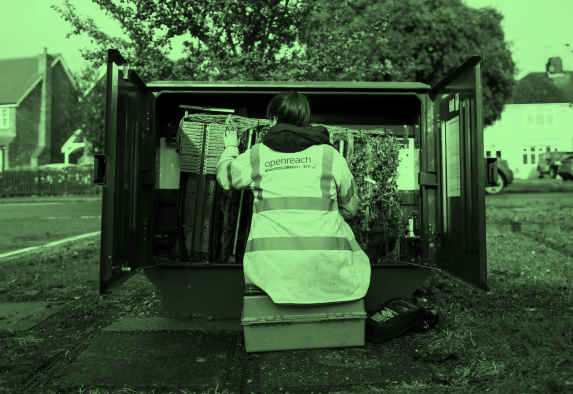WLR withdrawal
In this second instalment of our blog series, we’ll examine the crucial role of Wholesale Line Rental (WLR) withdrawal in Openreach’s All-IP transformation. While WLR may seem like a simple copper product, its impact extends far beyond the physical infrastructure.
Openreach announced in November 2017 that it would close the Public Switched Telephone Network (PSTN) by December 2025. As WLR relies on the PSTN, this decision directly affected the availability of WLR services. Subsequently, Openreach confirmed that no new WLR connections would be offered across the UK starting from September 5, 2023, with certain exceptions.
The transition to a digital network impacts various WLR products, including WLR-PSTN, WLR-ISDN2, ISDN30, and thereafter LLU SMPF and MPF. To gain insights and gather industry feedback, Openreach conducted pilot trials in Salisbury and Mildenhall to test the WLR withdrawal process. Based on the learnings from these trials, Openreach decided to extend the WLR switch-off to January 2027 and so the migration will now be phased between 2025 and 2027.
Key dates
- November 2017 –Openreach announce intention to close PSTN network
- December 2018 – Openreach issues formal notification of WLR stop sells
- May 2021 – WLR Stop sell for Mildenhall trial
- January 2022 – Contract termination notices served for trials in Mildenhall and Salisbury
- April 2022 – Managed migration starts for trial exchanges
- 5 September 2023 – UK wide stop sell on new WLR
- 9 October 2023 – Salisbury and Mildenhall trials close
- December 2025 – Original WLR withdrawal
- 31 January 2027 – New WLR withdrawal
So why has the WLR withdrawal date changed?
During the WLR withdrawal trials, it became evident that certain customers, such as Critical National Infrastructure (CNI) customers and those using Telecare products faced challenges when migrating from their existing WLR services to future digital offerings. In some cases, the Telecare products were incompatible with the new services.
To address this issue and ensure the safety of CNI and vulnerable customers, Openreach extended the WLR switch-off timeline. This extension provided additional time for Communications Providers (CPs) to identify and safely migrate CNI and vulnerable customers.
So why is WLR more than just a copper product?
While Openreach’s WLR services are clearly copper products delivered over copper lines (and sometime aluminium cables), their role extends far beyond the basic voice services for individual customers that they were envisaged for, and indeed the engineering processes they were designed for.
Over the past two decades, WLR has been increasingly used to support complex business solutions, including critical national infrastructure (CNI), large-scale projects (like retail networks etc.), and specialized applications (telemetry, monitoring, CCTV, EDI, resilience, large volume call centre applications, care homes, sheltered accommodation etc). This has often involved either the addition of expensive Value-Added Services (VAS) and/or specialized project management or the “under the radar” provision of non-standard services by local Openreach engineering teams.
However, over the past 18 month the challenges of delivering single line All-IP voice services over various fibre-based technologies (SOGEA/FTTP/SOTAP/SOGFast) is becoming clear to the regulator. This has led to challenge and slippage of the WLR stop-sell dates. Yet, the complexities and solutions for supporting complex and CNI migrations, especially in conjunction with the broader Exchange Exit plan, are not yet fully explored.
For businesses to successfully plan migrations, critical thinking needs to include the understanding of the “real business service” that the line supports for a business, and the technology and hardware that delivers that service. Understanding how WLR lines are integrated into complex solutions to deliver the required bandwidth, stability, and resilience is essential for effective planning, scheduling, and migration.
When managing critical national infrastructure solutions, it’s crucial to recognize the unique challenges posed by non-standard unihabitable or remote locations. These solutions often involve specialised hardware and installation methods, and product compatibility may not be guaranteed. Whether the lines are used for CCTV, traffic control & signalling systems, telemetry, or remote payment/ticketing systems, each application presents its own distinct challenges in planning migration.
How we help
Acuity Insight and its team of dedicated network & services professionals have a deep industry understanding of how to plan a key network transformation working with Openreach. We can assist you in making informed decisions and developing comprehensive, actionable plans to ensure a successful transition.
To discuss how Acuity Insight can support your organization in navigating this transformative process, please contact us for a free and confidential consultation.





0 Comments